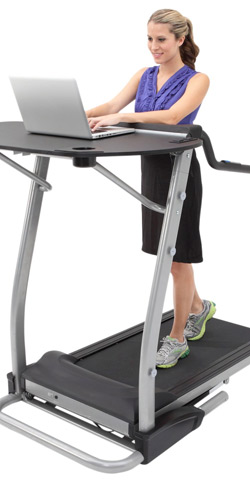
She and her fellow researchers asked experiment subjects to complete a 90-minute typing task while walking or sitting, while they measured muscle activity in the neck, shoulders, forearms, wrists and lower back. The researchers discovered that there was lower but more variable neck and shoulder muscle activity when subjects were walking compared with sitting, all of which translates into less discomfort. So treadmill work stations are potentially helpful in reducing the neck and shoulder muscle pain associated with computer work.
Athletes of the workplace
Côté developed an interest in doing research into muscle strain at a time when she was dealing with physical injuries caused by her own training schedule. She had been a serious middle distance (800 m) runner for over a decade, starting in her teens, running 100 km a week and feeling great about it. She had the speed and skill to move from the provincial level to the national and then on to international competition, becoming the National Junior Champion and representing Canada in the World Junior Championships in Bulgaria in 1990. In 1995, she went to the World University Games in Japan as part of the Canadian National University team, and a year later, she made a bid to become a member of the Canadian Olympic running team.
“It didn’t work out, I started to develop all sorts of health problems and injuries,” says Côté, pragmatically. “But I was gradually starting to get more interested in the research than I was in the running, my focus was changing.” She had realized that she could help a lot of people by looking into the causes of neck and shoulder pain, one of the most common complaints of office workers. “Whether you’re a computer worker or a middle-distance runner, injuries happen when you tense a particular muscle or group of muscles for too long, and the blood can`t flow into the region as it should and regenerate the muscles. Bodies are made to move.” Her solution to reducing muscle pain for office workers is simple: minor movements and adjustments of position every few minutes. The study done by McGill University.